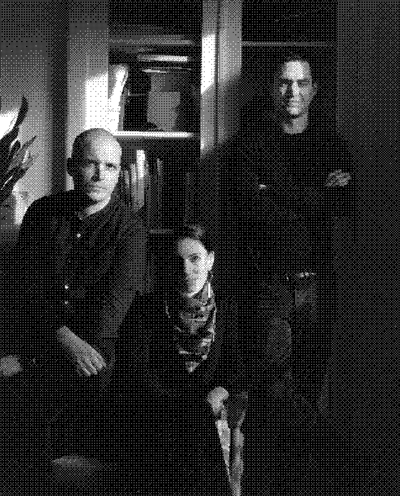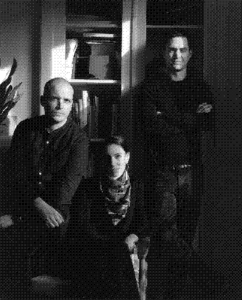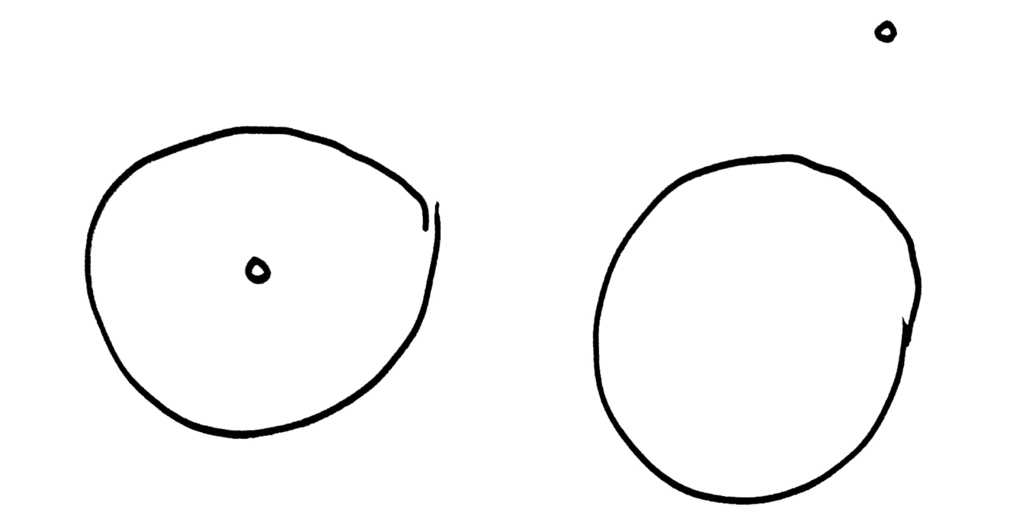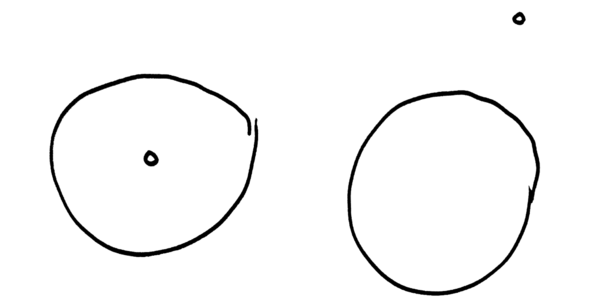Could you please introduce yourself?
My name is Mirko Borsche, I’m from Munich, I have an office called Bureau Borsche, and I’m a graphic designer.
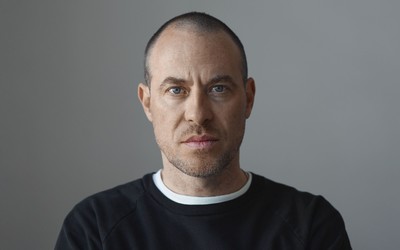

Mirko Borsche
And how do you present Bureau Borsche?
It’s changed so much over the past five years! Ten years ago we were presenting ourselves as a design studio, mainly working for content-based retailers, like editorial websites and stuff like that, but over the years it changed a lot and now most people ask us for specific things which are actually not on our website. For example: doing collections for them, like garments, which is quite new for us. We don’t have this yet in our normal description.
How did you choose the name ‘Bureau’?
It’s a French name, I know. (smiles)
I didn’t want to call it something German because I needed something international. When I launched, the office was called the Bureau Mirko Borsche. The idea was I just wanted to freelance, I didn’t want to open an agency and I had a very small room in a small part of Munich. I wanted to freelance for editorial clients so I just needed a short name to explain where I was sitting, and that I’m actually not in any way like an agency or something big, so ‘bureau’ sounded easier.

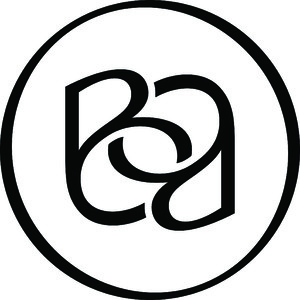
Bureau Borsche monogram
What’s your current state of mind with, generally, 2020-21?
It didn’t really change from 2022! Actually, I think it gets worse. Until December 2020, I was still easy with everything, but now, it really starts working on my nerves, well, maybe it depends on the weather… We have snow, it’s almost half a meter, so you can’t go outside, it’s super cold, and the whole curfew thing is working on all our nerves. I really didn’t see anyone for the past year. I didn’t even leave Munich for the past year and three months – which is crazy, because normally, I’m sitting on an airplane at least once a week. I’ve been to the mountains, but that’s close to Munich. But it could be worse, for sure.
And your professional state of mind, for the Bureau? Is there the same frustration?
No, actually, because the clients calling us changed over the past two years, so luckily we haven’t been affected that much yet by the Covid. At the beginning of last year we lost almost all of our clients – around 90 % – but a few weeks later the first new ones called us. It’s not a hell of a lot of work that we have to do at the moment but it’s better than most studios, I think.
You worked in advertising agencies before creating the Bureau. What did you learn then?
When I did advertising, it was in the 1990s so the end of its glorified era. At the beginning of the 1990s you could still go to dinner and impress somebody by saying: “I work in an advertising agency”.
From the mid 1990s, I changed my point of view about that profession. What I really learned about that time is that the thinking in advertising is very strategic. It’s not that creative, it’s a very pragmatic and a very strategic thinking that you actually need. Because the bigger the brand, the easier and the more versatile the message must be. We’re still trying to implement that in our designs.
There’s a lot of thinking but a lot of pragmatism as well, and we always want the message to be quite clear, even if it’s clear only in our minds. That’s something I learned there. A lot of marketing around the brand is also important because you’re always working with teams, with other creators, with people from marketing and PR, and understanding their concerns is easier for me now because I did it for a very long time, for very big brands in agencies.
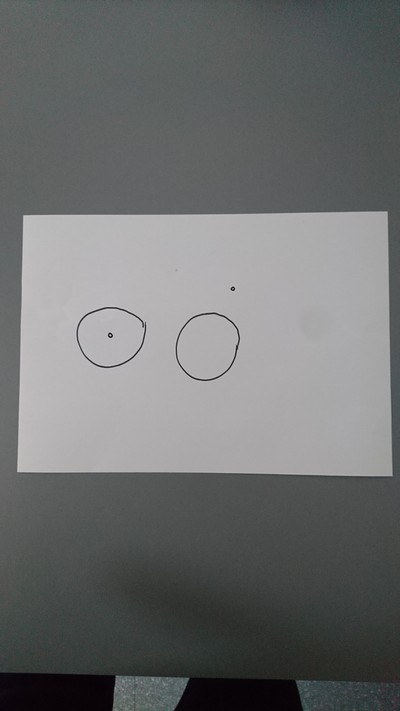
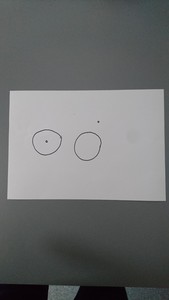
Let’s go back to the beginning of Bureau Borsche. You mentioned that you wanted to focus on editorial projects. What was your intuition then? Your plan?
I just came out of several magazines as an employee, and Germany has a very small art directors scene around those magazines. I just saw an easy way to earn money with editorial projects because I was quite known in Germany for those. I just had to get out the news that I was freelancing and wait for the calls, that’s how Zeit Magazine happened, because Giovanni (di Lorenzo, Ed), chief editor of Zeit, learned I was available. That’s how this long collaboration started. But I didn’t really plan for anything. First, I quit my job because I wasn’t “aligned” with the editor we had at that time. I didn’t feel that happy anymore working there. I just wanted to have a year off as a freelancer, and that’s why I made a website called Bureau Borsche. Most of our clients then were agencies, publishing houses, clients who hire freelance creative work.
You studied in London? What were your creative references then?
I went to London because I did graffiti when I was about 16. I started with graffiti and did a lot of trains. When I stopped school here in Germany, after the abitur, I already had some problems with the local police, and also with some European polices and it was a good restart to go somewhere else. At the time, I actually didn’t really want to study graphic design, I just wanted to study something where I could draw. I was really into sketching and drawing. A friend of my father, who was an art director and a graphic designer at the time, who had studied in London, said: “Your son should do graphics, he’s going to be super happy with it, and he should study in London”. At that time London was like one of the places to study graphic design because of Neville Brody, a lot of other people, magazines like i-D, The Face, you know, all these things were happening. It was the beginning of the 1990s, the beginning of the whole rave culture, club culture, a lot of flyers, Ministry of Sound, the Wag, all these clubs. That’s the only reason I went there to study.
My English was so bad at the time that I didn’t understand the difference between the BA and the MA, and so I talked with different school directors and Kingston was the only one that asked me if I wanted to do a Masters. I thought “Bachelor doesn’t sound as good as a Masters”, and it’s like one and a half years shorter than the Bachelor. And I had to pay for the university as well so I thought “it’s cheaper and it sounds better”… and yeah, that’s why I made the mistake then of starting with the Masters class, in advance.
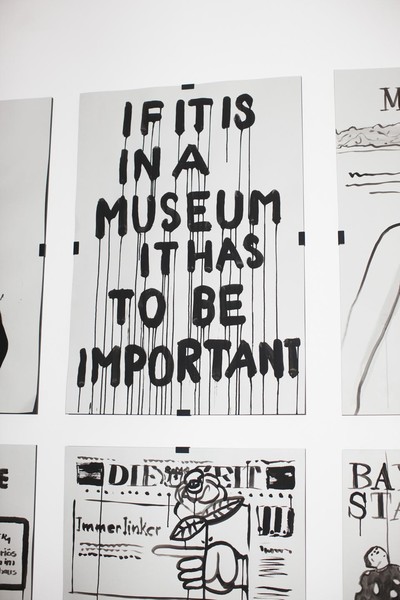
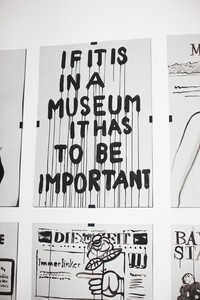
The Design Museum— Unplugged 2012 Exhibition of selected works
And while you were studying, did you find out about graphic designers or art directors that you really liked?
I was actually not interested in graphic design, not at all. I was still doing trains in London, and I was still doing graffiti in London and a lot of illustrations for the tour guides around Kingston and southwest of London. Actually, graphic design itself, for me, was quite boring.
When did it become interesting?
It actually started when I had the chance to do my first magazines. I then understood all these knots between creators and how they could work together. During my experience in advertising, I couldn’t experience anything of that because everything was planned, so the photographer’s not creative, the illustrator’s not creative, everybody’s just working for the client and you have a lot of correction loops. So any “happy accident”, as Bob Ross would say, can’t happen because everything’s extremely planned. When I did my first magazine it was for the Süddeutsche Zeitung, which is one of the biggest daily newspapers in Germany. It was a magazine for young people, which came every Monday as a supplement in the newspaper. They didn’t have any money at all, so we actually could do whatever we wanted. I had the chance to do my own illustrations in the magazine because we had to save money for some photoshoots.
Even if the photographer was a student and didn’t get that much money, we still paid the travel expenses. Jurgen Teller, at the end of his twenties, did his first photos for this magazine, and Wolfgang Tillmans too. A lot of actually famous German photographers started in that magazine. To make that happen I had to do a lot of illustrations to save money for their travel expenses. That was also a big chance to recover the passion in graphic design.

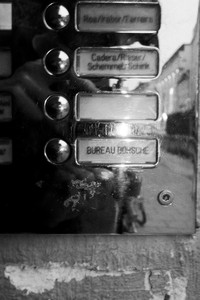
You maintain today that very high level of creativity and commitment, yourself and throughout the Bureau. How do you make sure of that?
That’s what young people tell me! We just try to make the best work for the payment we get, you know what I mean? We just want to do a good job, a really good job, we try to work together with our clients, so they’re happy and we’re happy somehow, and I don’t know at which level that might be… but sometimes it’s a stressful one.
How would you describe Bureau Borsche design today?
That’s hard to say, but it’s… in between. Sometimes it’s bold, sometimes it’s shy, sometimes disruptive… It’s easier to describe it from the outside, I’m not really reflecting much on our work because we’re not many people here and we’re working a lot. So I think it’s easier for you guys from the outside to tell me how you see our work.
How many people are there in the Bureau at the moment?
Eleven.
And how do you maintain that level of creativity between the eleven people?
We really try to push this idea of not thinking as an individual, but thinking as a whole. We try to all sit in one room, on one table, and everyone is there with their laptops, so it keeps distances very short. Everybody can help each other out, as well, so if someone has a project to print the next day and he’s a little bit late with the layouts, everybody can help. We’re super flexible about that. It’s something really natural for me. Sometimes I even do just the research, maybe the first draft, depending on what we need at that moment.
This can sometimes be a problem if I go to graphic design classes and do workshops.
If I’m sitting in a workshop, sometimes people are super freaked-out when I tell them: “You’re doing the research for the photographer, you’re doing typeface, you’re doing the grid,… ”, and they go: “No, I want to do the whole thing!”.
But, you’re never going to do the whole thing in your whole life, or you’re just a one-man-show. I mean, obviously you can do everything alone but coming from graffiti, I always used to be in a group, or working together with a lot of people, being inspired and learning from the way others work. It’s more fun to be creative in a group of people rather than sitting alone at home and thinking that you’re a genius.
Is this one of the reasons why you still describe yourself as a graphic designer, rather than saying “I’m the creative director of Bureau Borsche”?
Yes, because I still really like doing graphic design. Even if I never wanted to study it and really hated it at my first jobs, now I really like that profession and really like designing. It’s possible for me to communicate in the office, considering everybody equal, as long as I’m describing myself and acting as a graphic designer. It doesn’t give the whole picture though, everyone knows that it’s my studio here anyway. I have to buy the toilet paper, and the coffee, and that stuff, but just like in communications: it’s good to have no hierarchy.
You mentioned learning a lot about strategy when you were in an advertising agency. How do you handle clients strategy at Bureau Borsche? Do the graphic designers also think about it, or do you have a specific profile working on that?
All the designers work on it. It’s very important for designers to know that. That’s the problem I have with graphic design in a way. A lot of graphic design looks good but doesn’t really make sense, and there’s not really a higher idea behind it. And if you look at a lot of the designs from the 1960s, the 1970s, and 1980s – actually even before we had big advertising agencies – you can still see how much impact the ideas had and how good the advertising still is… The typefaces and other things can be outdated, but as long as the idea is good and there’s a good strategy behind it, it stays good for a long time. I want to do something that can stay for longer than a year or two… to create things which could be classics in the future.
And how do you handle the presentation of ideas? Does it change in relation to the clients’ nature, or is it always the same?
Basically, the client knows best how his brand is working and how it should communicate. But it’s always the strategic idea, or the dogmatic thinking behind the design first. It’s very important for people to follow the reasoning behind something which may be disruptive, because otherwise, as I’ve said before, it’s just “looking good” or “weird”.
We try to work together with clients and once the job is done, they can hire us again, or they can hire someone else as well, with different ideas then.
To work like that you need a very clear idea of how the communication and the design have to work and the message it sends to their peer group.
I know it doesn’t really look like that all the time. Sometimes I’m talking somewhere, about the design we’re doing, the full concept behind it, how one idea led to the other, and people go: “That ’s crazy, because I never really bought that”.
It’s super important for the client to know that we don’t choose that typeface because it just felt right at the moment, colours because you need colours whatever the code is. All this needs a lot of connection to the DNA of the actual brand.
We’ve talked about creative references, do you also have some strategic references, among brands, or other bureaus/studios? How do you develop the Bureau itself in a strategic way?
That’s very interesting because at the moment we’re in that floating process of trying first to understand these new times, which started in March of last year, which definitely changed the whole thinking process around how important our work still is, how communication is going to evolve in the future. Even if Covid is gone, there is a lot that’s going to stay, because we got used to a lot of good and bad habits.
We’re in the middle of that, we also moved offices last year and now we have a kind of store and exhibition room. It’s not big, but it’s something, and it’s central, very close to the main station. The Covid situation completely changed our plans for that because we thought it was going to be like a pop-up store with people in the bar and the gallery. Now, it might be next year or at the end of this year, but maybe it’s not that interesting to have just this as a space. Could it be something more digital in the end?
We’re in the middle of a new transformation. We have some basic ideas for the future. We don’t want to just offer services, we also want to offer products which normally, as a design studio, you would offer, like t-shirts, sweaters, posters, books, whatever. But actually our real aim is digital solutions for a kind of communication around smaller businesses. That’s also part of what we’re discussing at the moment, which would also allow us to move to a different stage. It sounds super boring, I know.
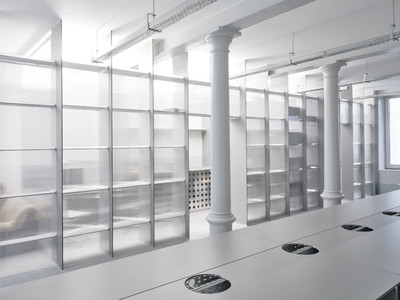
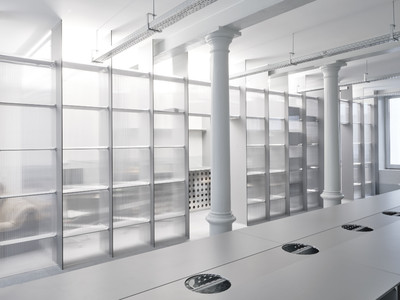
The Bureau Borsche’s Office
Not at all. What ’s interesting to us as well is this development process. How do you make strategic decisions like moving offices, or putting in a pop-up store? Do you discuss them collectively?
Yes it’s a collective thinking. Munich, like Paris, is super expensive when you rent a flat or an office space. We have a team of people who’ve already stayed 5 to 6 years and who plan to stay longer. As a future plan, way before Covid, we were thinking about how to maintain our constellation of people and the constellation of the office without it being too expensive. I mean, if we don’t earn any money we can’t pay our rent anymore. Now we own our space. That was the decision we made, as an office, to be free from any money issues, to have a warm space, and to work. These things are definitely strategic, keeping us a bit more free. Obviously we all need money, but we don’t need that much money anymore, because our rent was 6000 euros before and it was a very small space, like 180 square meters…
Sounds indeed like Paris’ prices…
And now we have a much bigger space for all of us. We still have to pay back the debts, but in Germany it’s much easier to pay back debts for something you buy than to pay rent. So it’s a very German discussion, you can tell: we talk about security, being safe for the next years as an office and a team. Everyone is working as a fixed employee and has a fixed contract, with social payments, and some of the health payments coming from the office. It’s important that everybody has a good and clear, clean feeling about their job at the studio. Since the beginning of Covid, we’ve never sent anybody home. I mean to work from home yes, but no temporary unemployment, no shorter working times, and lower wages. We never did this and we’re not going to do that. This is very important to us, because people working here feel secure.
When you opened Bureau Borsche you weren’t thinking that you would ever have to become a manager of that many people…
No, I never thought about that. Maybe in the beginning I was a very bad manager because I didn’t really know how to do it, but a person I met, Jonas Imbery, helps me a lot. He’s actually the key person in discussing with us how to manage and lead the office, and how to bring it into the future.
Is Jonas an advisor?
It’s not just that. It’s not just about creative decisions. It’s also about how many holiday weeks do you need in the year, or how many more should you give if you want to be a good chef, things like that, or how much more money do you have to pay, things that are not as usual in our business.
How did you meet Jonas Imbery? You were DJ-ing together, right?
Yes, we were DJ-ing together. Actually he was one of my first clients, way before I was freelancing, when I was working for other magazines. He and his former partner, they had a music label called GOMMA, and I was working for them, doing the artworks.
It’s funny because it was a super famous label here in Germany, and they did a lot of cool stuff. Unfortunately some artists split up, Jonas stayed in Munich and is now working with me, which is super cool.
Going back to strategic development, you’re becoming very international. Do you have a strategy to handle that international development? Are you looking for some clients or do you just wait for the phone to ring?
Luckily we have a lot of people who ask us to work with them, so we don’t really have to acquire any jobs at the moment. The key in opening up to a more international, broader audience was Paris. Because there are not a lot of agencies outside of Paris working for Paris companies. You know this yourself: it’s always the same kind of agencies – or some younger people – but it’s always the same brands, almost always the same agencies. So we’ve been one of the first which came from somewhere else, even from Germany – which doesn’t make it easier – and not from Berlin, but from Munich – which is a bit curious. That definitely helped and then we started 5 or 6 years ago to work a lot for Italy and Milan. The good thing about Italians is that they’re open. They’re not like most of the other Europeans who say: “This is my baby now, and you can’t work with him”, they really pass you around, like: “This is my friend Mirko, he’s super excellent”, or “This is my friend Mirko, he has a cool company, you should do something with him as well”. That’s how it all started.
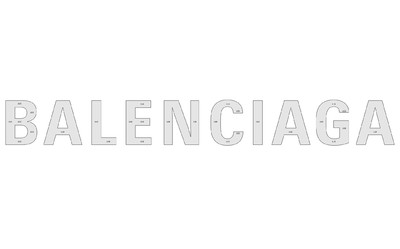
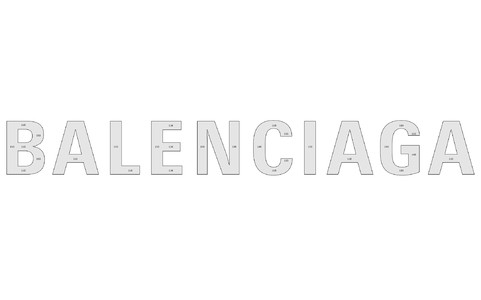
Balenciaga Logo Redesign 2017

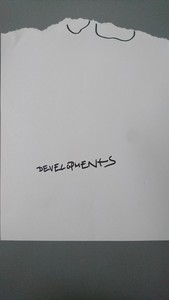
And do you know why the first ones – French or Italian – why they came to see you? Did they have one creative project that they really liked?
Interestingly enough, it was almost always the Bavarian State Opera in the beginning. I don’t know why, it’s a communications project, special in a way, as a product and content. But yes, most of the fashion brands who came to us were all about that Bavarian State Opera thing. Even Alexis was writing to us, when he was doing the first Kaleidoscope issue, it wasn’t about all the other magazines we did before, he was like: “You know what I really liked? It was the Bavarian State Opera”.


Bavarian State Opera Season 19-20
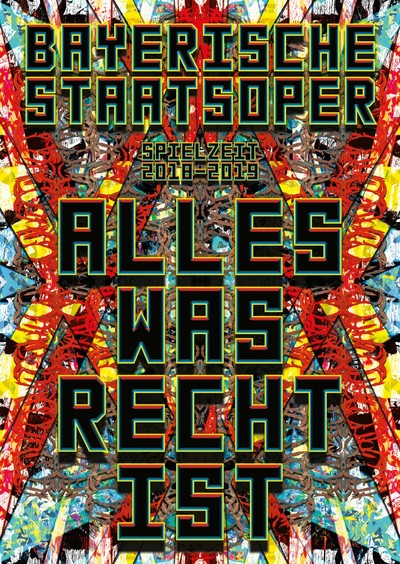
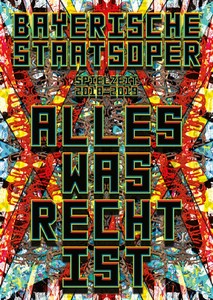
Bavarian State Opera Season 18-19

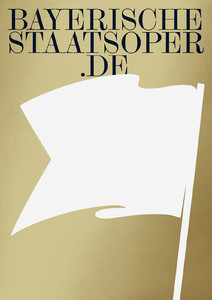
Bavarian State Opera Season 10-11
And are you consulted in pitches, in competitions?
Almost never. Super rarely, and it depends on the people who call us. If it’s a well-paid pitch – sometimes pitches are really well-paid – then we might do it. I think that’s totally OK. Unpaid pitches, almost never. But sometimes you have a person on Zoom and we feel it’s so interesting, so nice, there’s such a good chemistry already, that we jump over our own shadow and go for it. And 90 % of the time, it just happens.
For example, one pitch we did – now I can say it because it’s going to be released in March – was for Inter Milan.
Redesign FC Internazionale Milano 2021
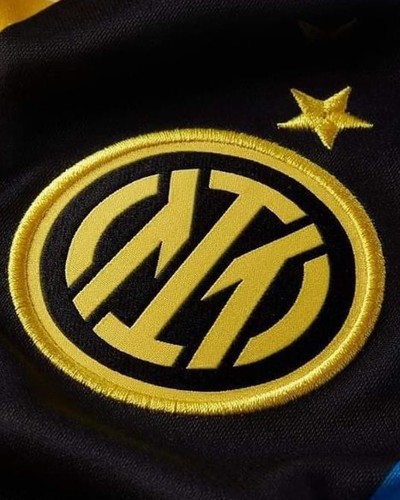
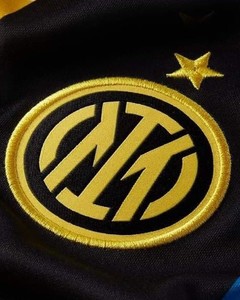
Redesign FC Internazionale Milano 2021
What did you do for Inter Milan?
It’s been leaked already. I mean, it’s not our name that’s been leaked, but it’s leaked already that the whole brand and everything is going to change. It’s a really big thing. It was a pitch with 6 agencies but the guy who was calling us felt so familiar, was also from Milan, from this group of friends we have in Milan. We felt we really had to do that, because that’s one chance in a lifetime. I really like playing and watching football, so do a lot of people in my office. We have two French guys here. One of them is one of the biggest PSG fans you can imagine. He’s always super upset when they lose. And the craziest thing you can do is do something new for a football club, especially if it’s a traditional one, like Inter Milan. It’s going to be completely different from what it is now.
You’ve got the jersey, the badges, the history, it must be quite a tricky one…
Jerseys, souvenirs, stadium, training camp, photography of the stars, image campaign, clips, movies, Instagram, all social media, all digital platforms inside the stadium, Inter Milano television, then they have esports and ten other things they’re doing, so it’s a really huge project. It was a hell of a lot of work, but it’s going to turn out really nice I think.
And it could be huge visibility for you, because when a football club is being rebranded they talk about it on every continent.
I don’t think they’re going to talk about us, that’s the way it is, but at least they’re going to talk about the project and it’s the first time I have something on the side of sports. As a football fan, it is like the Holy Grail, a holy thing, like The Sun in England: if you’re on that rosé pink paper once, that’s something very special.
Which leads us to a PR question. You’re one of the rare graphic designers who’s been interviewed in mainstream media. We read your interview in The Guardian, for example. Do you have PR strategy or is it just incoming calls again?
Just incoming calls, like you guys.
Somehow you must still strategically think about your communication, because you have your website, your Instagram, right?
It’s interesting that you also mentioned that because we’re rethinking it at the moment. We had a big call in here where I said that we should maybe change the website, the whole Instagram account, and the way we communicate on these channels. I don’t know how, I was just saying that somehow it’s like the same thing, the website and Instagram: we’re just showing pictures. It’s not telling any story, it doesn’t feel that modern anymore. It’s not fitting for the media and not questioning Instagram as a tool. How much effort should we put into a media, which is actually – in my opinion – not that interesting anymore. Instagram is just very important to get graphic designers from all over the world. We don’t have a big turnover but if somebody is leaving, then somebody new is coming in. A lot of the people in the studio are internationals and because of that, people are not going to stay their whole life in Munich. Some of them do, because it ’s beautiful, but at the moment Instagram is a good tool to communicate with a lot of young professionals and to get their attention.
You mentioned that you had a conversation internally on Friday. How are you going to work on that?
I think we’re going to meet again today, right after this call. The only thing I wanted to do on Friday was to put that out to the group and tell everybody that whoever feels responsible of this new project should tell me on Tuesday what his plans are. We have these Excel sheets for jobs and everything, this will be an actual job on this list, we will also block official time, he/she won’t have to do it after work, or on the weekend. He/she can officially sit there all week and think about that project and say: “I just took these hours to think about the new website”.
You mentioned working on the weekend or allowing some time. What’s the working culture at the Bureau?
It’s 9am to 6pm, or 9am to 7pm, normally 9am to 7pm, because we have a beer after work. It’s Bavaria!
We were mentioning that Guardian feature about you when you did that work for Venice International Artfair, you said two things: that nobody’s interested in advertising anymore and that clients have lost their balls.
Yes, I think the two are connected. Remember when you went to the movies and you were actually happy to see those 15 minutes of advertising? Remember that time? And you would say: “Jeans… Levis … ah, nice! New message, I haven’t seen that one”. We had these times. And now clients are a big marketing thing: all these surveys, what everybody wants, how to convince and be convenient to everybody, wanting to be liked by everybody. Brands and products have this problem too. If you go to the annual Milan Salon, over all these years, all these new chairs are coming out. They all look like one another. There’s almost no signature piece behind it anymore. No one is daring. If someone makes a little bit of improvement on something, everybody’s jumping on to that train and just doing replicas of that idea. Even with brands like Adidas or Nike, you look at the communication and the products they’re doing, the colour codes and the colour ways. Over the years, it’s getting very similar. You always have the feeling that Nike has the better designers and Adidas are not as good designers, but in the end, somehow it’s similar. Even as a kid, it’s not easy to see which player is wearing which boot or which is the newest Nike or Adidas.
So that leads me back to the communications aspect, because the communications aspect means the advertising. I don’t know how you feel, yourself, me, I’m super bored.
I see it from my kids too … I have a son who’s 22, a daughter who’s 2 and a half, and a son in between, who’s 13. All of them hate advertising, even the 2 and a half year old! She goes: “Oh, that’s bad, that’s advertising”. There are kids’ songs on Youtube, and there’s advertising in between. If it’s a bad kids’ song, she thinks that it’s advertising!
It gets worse because of all the ‘cookies’ everywhere – everybody’s retracking you. You’re already paranoid when you’re on your Instagram account: you just talked about your new diet and after the first three posts you have advertising for some low-sugar product or some fitness app. That makes you feel paranoid, it gives the whole industry a worse image of itself, maybe worse than the reality. We are at that stage where I don’t think it’s very easy.
When I started as a professor, my first talks in universities, when I asked who in the room wanted to become a graphic designer and who was aiming for advertising, there were only two future graphic designers and a majority wanting to go into advertising. If I do a talk now and dare to ask who’s going into advertising, almost none of them are. That also means that the industry doesn’t really have any new talents coming up. I did that for 8 years, and a lot of my friends from that time are still in advertising, some of them are in really big companies. A few years ago a good friend of mine was chief at DDB worldwide, in New York, one of the top level agencies. They have at least a thousand agencies in their network and a few thousand people working for them. Even he said that it was really hard to get some new talent from Europe. If he goes to South America or other continents, it’s different, of course.


La Biennale di Venezia 2019


La Biennale di Venezia 2019
Then, is there some hope that big brands are going to start working more and more with independent creative studios?
Yes, we can see that already. The problem is that as long as brands try to have a 360° worldwide communication, they always need somebody who can provide that. If you have a big network it’s possible. We have some Chinese clients and when we have to deal with working with Nike China, if you don’t even know how these signs work (which we do now, even if we can’t read them), there’s too big a lack of cultural understanding. For a product or something small for Nike, that isn’t a problem, but for a 360° communication it’s too complicated. One of the other problem is that all this generation of young marketing guys have changed sides from agency to client. And they are now the leading points in the marketing department of these big companies and they haven’t learned differently, they only have one way. You guys are also teaching in these schools. You still know that if you have an ‘after’ in a club in France where all these advertising people are running around and you’re talking to them about their industry, none of them would ever admit how bad the quality is at the moment. Nobody admits that the only prizes they win is in Cannes and nobody knows wherever they got this work broadcast or printed to get those creative points. It’s just free ideas, something that just goes viral once, some poster around the corner. Their daily business and the thing they make their money with is super dirty and super boring.
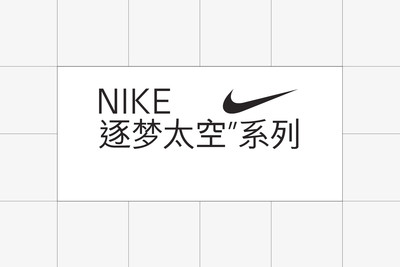
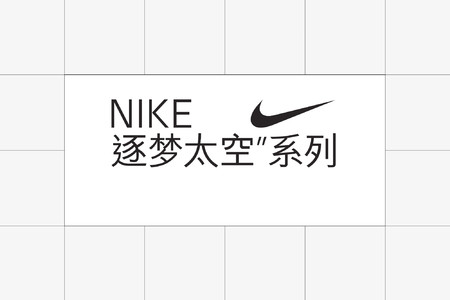
Nike Space Capsule 2019 for 360° Communication
What about the small studios then?
I don’t see at the moment how they could manage because big companies don’t trust anyone. I think the biggest problem now coming through the Covid period is that the market’s going to be full of creative people. I don’t know how it is in France right now, but in Germany, so many people have lost their jobs in the creative business, so it’s really easy for clients to get them to do whatever they want. The problem is that the more people are out of work, the lower the prices get.
Let’s see how that develops, it’s such a weird phase. Even here in Munich, and even more in Paris, when that curfew stops and you can go out again, it’s going to be interesting to see how many agencies still exist, how many of your old bosses – the crappy ones – remain. My feeling is that all the people who went into it are going to be gone. I don’t know what this is going to mean for the whole industry.
What we see in Paris is that the big advertising agencies and production companies are already trying to buy small studios because they don’t have their skills.
It used to be the same here. They wanted to buy my office for ages, but we never sold it. Now it turns out that we have better clients and better connections than they would ever have.
And, you know, the good thing with being a small studio is that it’s easier for me to talk to the CEOs in the end. If you have a big agency, that’s the marketing guy talking to the agency. For example, now, with the Inter Milan campaign, even the president is calling me up on the weekends to say: “Mirko, well done. I really like it. Thank you very much”. And that would never happen with an agency.
Steven, the owner, was writing to me on Whatsapp all the time. He’s a billionaire. Normally for him, I’m like nobody, a totally uninteresting person. And in this case, for me, it’s obviously the easiest way to come to the product I wanted to come with.
Note: we finished with our trivial questions by email.
If you could do a similar job at another time, during another historical era, what would it be and when?
Shoemaker.
Are there books which have helped you?
Jost Hochuli, Detail in Typography.
An artist or a person whose work has helped you in terms of development?
Pierre Mendell.
